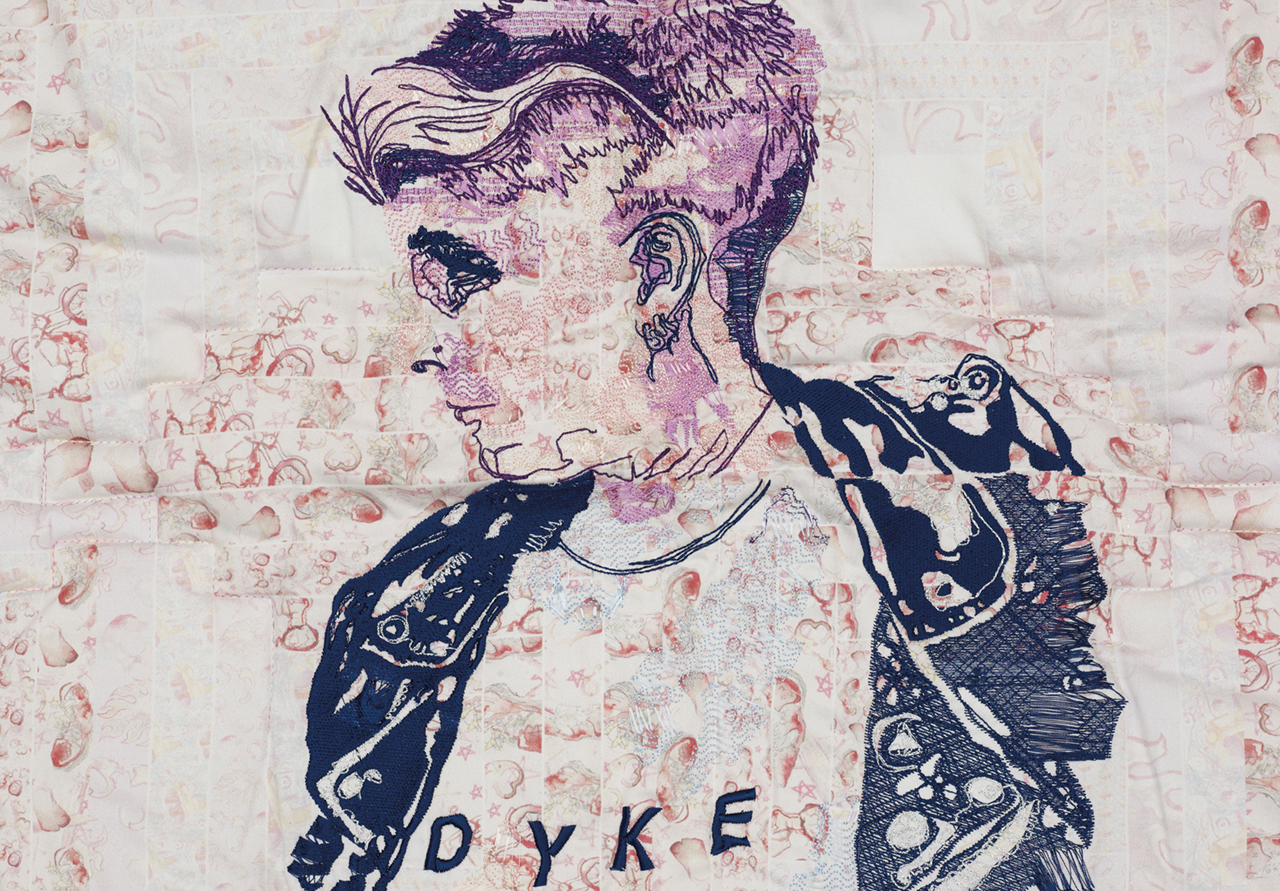A collection to have pride in
Has queer representation long been absent from Manchester’s Whitworth gallery’s collection or had no one looked for it?
If you were to search the Whitworth’s art collection database using the terms “gay” or “lesbian”, there’d be no results, even though the Manchester gallery has within its extensive collection works by artists such as David Hockney. It’s this historical anomaly that the gallery’s latest exhibition (Un)Defining Queer sets out to address, by bringing together works that can be viewed through a queer lens and creating a glossary of words around those works to ensure that queer artists are properly represented within the collection in the future.
The exhibition, produced in partnership with the Manchester-based LGBT Foundation, was developed over a two-year period, co-led by a group of people who identify as lesbian, gay, bisexual, transgender, queer and/or questioning, intersex or asexual.
“We have been looking through our collection to re-narrate some of the artworks that needed it, looking at our collection through a queer lens, at histories around queer culture and how we can give presence to the queer community within our works and within the gallery itself,” says Dominic Bilton, the Whitworth’s project producer and one of the curators of the exhibition.
“We didn’t really know what we had in our collection. We didn’t know about the queer history and the queer power that these artists had.”
The exhibition displays Renaissance prints from the gallery’s collection that depict Ancient Greek representations of relationships between men, but combines them with many other works from fine art, photography and textiles. Although well-known artists such as Derek Jarman are represented, Bilton was keen to ensure to avoid a “cis-gendered gay male perspective and be as intersectional and inclusive as possible”.
Female artists feature prominently, including Dame Ethel Walker, who produced works in the late 19th and early 20th century.
“She was a really interesting character,” says Bilton. “She was celebrated in her own lifetime because she was an exceptional leading exponent of the Impressionist style. She rejoiced in women, she loved the beauty of them, and what’s really great about her is that she was drawing and painting women from a queer perspective, for other women to enjoy, so she’s removing the male gaze.”
Although artwork by transgender artists is hard to find in the current Whitworth collection, there are pieces that can be given a trans reading, such as Aubrey Beardsley’s The Peacock Skirt. The 19th century illustrator, who created work for Oscar Wilde’s play Salome, was, says Bilton, “queer in a literal sense in that you never quite knew what his sexuality was, what his gender was. This piece warrants a trans reading because if you look at the figure to the side of the main character, it certainly comes across as someone who is gender fluid – very flat chested, masculine hairy legs and knees, but with a really beautiful, feminine face and big bouffant hair”.
Contemporary artists featured include Sarah-Joy Ford, whose two and half metre quilt is on display.
“She’s a lesbian artist who uses her sexuality explicitly in her work,” says Bilton. “Ford is interested in connecting contemporary culture with historic archives. It’s a fantastic piece.”
The artwork is called Chain Reactions, which comes from a lesbian club night in London in the 1980s. It was set up by former Greenham Common protester and drag king Karen Fisch, who is featured on the quilt alongside images from flyers and other work related to the event.
Alongside the artworks themselves is a project to create a glossary of terminology to describe what’s on display. Bilton says this is so that “it’s not the institution that is developing this language to attach to these artworks. We’re hoping that the LGBTQIA+ community can help us represent them.”
The term queer itself was given careful thought since “for many it is historically loaded while for others it has been actively reclaimed and used to self-identify. Our use of the word queer is an act of activism. We use it as a reclamation of the slur word.”
Queer Theory is a principle underpinning the exhibition, says Bilton.
“One of the seminal theorists within Queer Theory is Judith Butler who, in a nutshell, writes that ‘queer’ cannot be used as an identity term because the term is a word that is constantly changing, constantly in flux and it disrupts and challenges any fixed identities.
“However, within a gallery or museum space, in order to give the LGBTQIA+ community visibility and for the terms to be searchable within a collection, we have to define what queer and its derivatives are. We have to fix identity. Due to this, there is a tension between what academia states queer can be, and what the gallery needs queer to be. That’s why the title is (Un)Defining Queer. The ‘(Un)’ is to undo the definition whilst the ‘Defining’ is what the gallery needs to do.”
The exhibition is important, says Bilton, because it gives “LGBTQIA+ people representation in the art collection, in the gallery, in history and in culture. It shows how they have informed things like printmaking, textiles and art practice as a whole.
“We’ve got 77 artworks on show and I really hope that people feel inspired, and get a sense of history and community from it. I hope people come away from this exhibition really proud of who they are whatever their sexuality or gender.”
(Un)defining Queer is at the Whitworth Gallery, Manchester until 3 December
Photos: Michael Pollard

Leave a reply
Your email address will not be published.